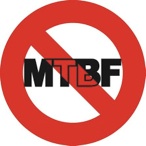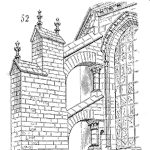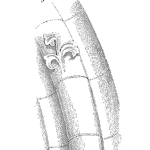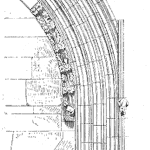This is the first annual survey to find what you recommend for those preparing for the ASQ CRE exam.
See the full list of reliability references for the CRE exam, for reliability and maintenance engineers at Accendo Reliability. [Read more…]
Your Reliability Engineering Professional Development Site
by Fred Schenkelberg Leave a Comment
This is the first annual survey to find what you recommend for those preparing for the ASQ CRE exam.
See the full list of reliability references for the CRE exam, for reliability and maintenance engineers at Accendo Reliability. [Read more…]
by Fred Schenkelberg 1 Comment
The annual salary survey done by American Society for Quality (ASQ) is summarized in the December 2011 issue. And, the good news is a CRE certification provides approximately a $21k salary premium over those in similar positions without the certification. Based on Table 2. salary premiums for certification holders in the article, Land the Big One, indicated the largest premium is [Read more…]
 At first MTBF seems like a commonly used and useful measure of reliability. Trained as a statistician and understanding the use of the expected value that MTBF represented, I thought, ‘cool, this is useful’.
At first MTBF seems like a commonly used and useful measure of reliability. Trained as a statistician and understanding the use of the expected value that MTBF represented, I thought, ‘cool, this is useful’.
Then the discussions with engineers, technical sales folks and other professionals about reliability using MTBF started. And the awareness that not everyone, and at times it seems very few, truly understood MTBF and how to properly use the measure.
by author-user Leave a Comment
test
test
test
by Mike Sondalini Leave a Comment

THE BUSINESS RISK EQUATION SHOWS YOU HOW MUCH YOU WILL LOSE FROM ANY FAILURE EVENT
THE COMPLETE BUSINESS RISK EQUATION EXPLAINS WHAT INFLUENCES YOUR CHANCE OF SUCCESS IN BUSINESS
—
Risk = Consequence x Opportunity x Uncertainty of the Opportunity
One of the most important business equations of them all is the full form of the business risk equation shown above.
[Read more…]by Greg Hutchins Leave a Comment

The majority of companies today outsource a major portion (up to 60-70%) of their work scope to subcontractors. As a result, the subcontractors become a risk to your project because you have no direct control over them. For example, if they start to slip their schedule you cannot direct them to put more assets on the job to pull the schedule back. The other risk that is not obvious is that posed by your subcontractors major vendors or subcontractors. To illustrate this point, this article describes a story that I was personally involved in.
[Read more…]by Sanjeev Saraf Leave a Comment

A few weeks ago [note: written in August 2010], Senator Frank Lautenberg proposed Secure Chemical Facilities Act (S. 3559) to the Senate committee on Homeland Security. The bill mandates Inherent Safer Technology (IST) or Inherently safer design (ISD) at high-risk chemical facilities.
Knowing the uncertainties surrounding the mere definition of inherent safety, one could say that it is preposterous to mandate IST. IST cannot be regulated and worse it would burden the industry. To a large extent this is true.
[Read more…]by Robert (Bob) J. Latino Leave a Comment

I’ve been in the Reliability and RCA space now for 38 years now (yes, I’m old 😊), but recently I’ve had a major change in perspective. For 37 of those years my family owned and ran a business (Reliability Center, Inc) that offered training, consulting, and software in the Root Cause Analysis (RCA) space. We developed and created the PROACT® RCA Methodology & Software which has been adopted by many Fortune 500 and Global 1000 companies. However, in 2019, we enacted succession plans as we (my brothers, sisters, and I) approached retirement ages. We sold RCI in 2019.
NOW comes the perspective change, I am not an RCA provider anymore who is beholden to a proprietary brand, but I’m now an RCA consumer with deep domain knowledge of what the core principles of effective RCA are. In this paper, I would like to remove the RCA provider brand labels, and delve into ‘What makes any RCA effort, good versus great?” When we remove the labels and look at any investigative occupation, all the steps are basically the same. So, let’s explore together!
[Read more…]by Fred Schenkelberg Leave a Comment

Destiny is no matter of chance. It is a matter of choice. It is not a thing to be waited for, it is a thing to be achieved.” – William Jennings Bryan
The Oxford English dictionary defines “reliability” as “the quality of being able to be trusted to do what somebody wants or needs.”
The textbook definition for “reliability” is “the probability that an item will perform its intended function for a designated period of time without failure under specified operating and environmental conditions.”
In this article, I will share a brief outline of the current and future state of reliability engineering, what works and doesn’t work, and why it matters to all of us.
[Read more…]by Mike Sondalini Leave a Comment

How to use Condition Monitoring Reports to do Maintenance Planning of the Maintenance Work Activities that will prevent Equipment Failure
This article by Peter Brown, a vibration analysis condition monitoring expert, explains how to address and action condition monitoring reports from your condition monitoring service provider.
Abstract
Maintenance Planning From Condition Monitoring Reports. Having developed the finest condition monitoring programme that provides all the data required to predict plant behaviour it is now necessary to convert that data into information and to plan it in for action by the maintenance team at a time that is compatible with operations.
[Read more…]by Sanjeev Saraf Leave a Comment

OSHA is asking stakeholders to identify hazardous chemicals they believe are most in need of action.
Why?
“OSHA realizes the inadequacy of many of its Permissible Exposure Limits (PELs) and is seeking creative solutions, both long term and short term, to address this inadequacy.”
For the benefit of the readers of the blog, I would appreciate if you leave a comment below to indicate what chemicals are of immediate concern. You can submit your nominations to OSHA here by 27th August:
by Arun Gowtham Leave a Comment

Organizations are hastily adopting AI into their operating processes to increase efficiency, raise profits, and stay competitive. Among the hustle & bustle, the effective management of the AI projects is neglected, and teams are left to figure out retroactively how a completed AI project fits into the Business’s long-term goals.
[Read more…]by Greg Hutchins Leave a Comment

Based on my career experience as a project manager, I have observed that promotions can come quicker in a small company compared to a large one. This is especially true after you have gained several years’ experience. For some reason, many large companies are slow in giving promotions unless you are a rising star. If you are not a rising start and want to get a promotion, I suggest you look for opportunities in small companies to get the title you want (e.g., project manager).
Once you have the title, no one can take it away which means after several years’ experience in a small company you have a much better chance of getting the same position but with more responsibility and pay in a large company. The challenge is-do you have the right stuff to succeed in a small company?
[Read more…]by Mike Sondalini Leave a Comment

WHICH CRITICAL SPARE PARTS YOU CARRY IN THE MAINTENANCE STORE ALWAYS REVOLVE AROUND HOW MUCH RISK YOUR COMPANY IS WILLING TO BEAR. IT IS PURELY A RISK BASED BUSINESS DECISION. LOOK AT THE ECONOMICS OF THE RISK DECISIONS AVAILABLE AND GO WITH THE BIGGEST CHANCE OF SUCCESS.
—
I have a question about critical spare parts determination that I always have a problem with. I do not know if this topic is included in the online preventive maintenance training I and my team of engineers are doing with you, that’s why I am asking the question.
How can I determine which are the critical spare parts that we have to keep on stock?
[Read more…]by Nancy Regan Leave a Comment
by Sanjeev Saraf Leave a Comment

Check valves are commonly used in the process industry for preventing back-flow or reverse flow.
Check valves achieve unidirectional flow by means of a mechanical partition – ball, diaphragm, disc.
[Read more…]